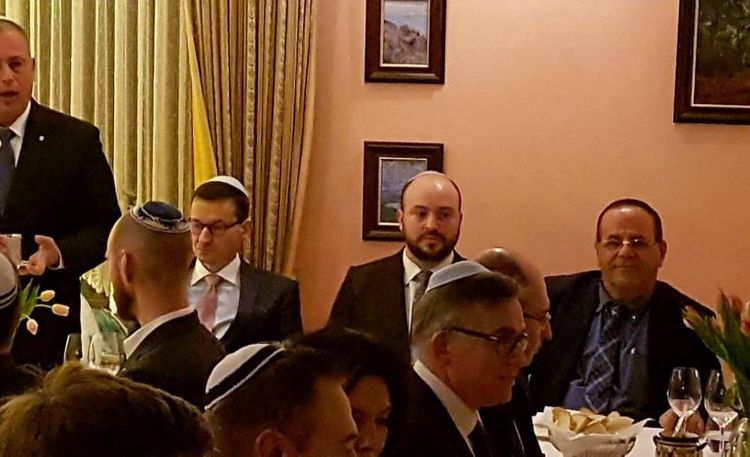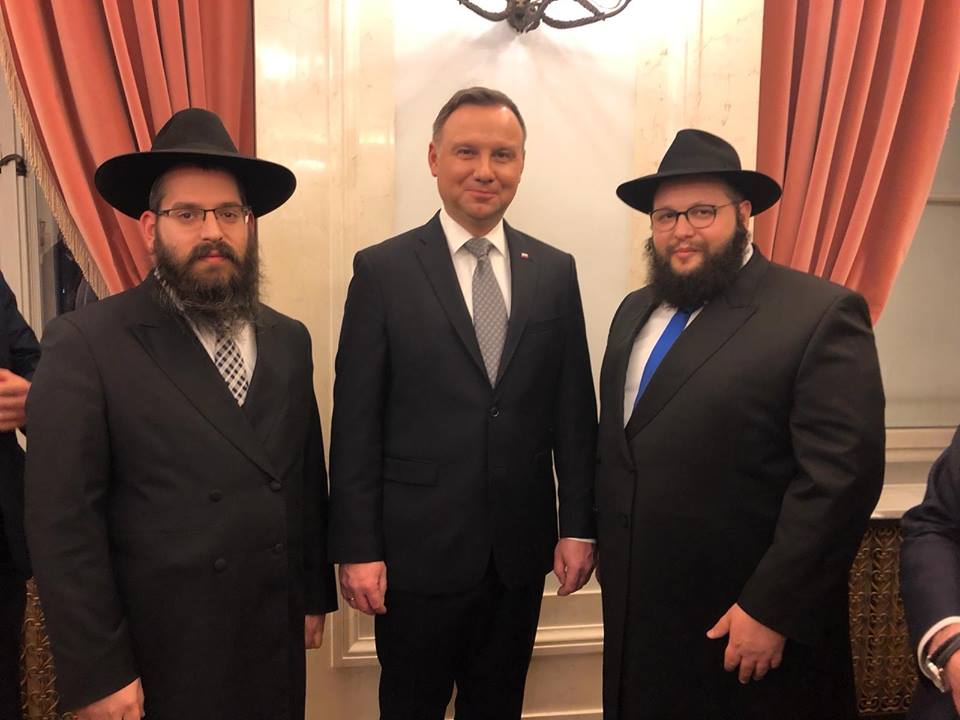You are using an out of date browser. It may not display this or other websites correctly.
You should upgrade or use an alternative browser.
You should upgrade or use an alternative browser.
Miscellaneous News
- Thread starter bd popeye
- Start date
China needs to set up private mercenary companies similar to Wagner group /Blackwater. Western mining projects are all protected by Pvt Military contractors who're heavily armed. Hence you'll rarely see them being attacked this way. This also grants them plausible deniability incase of conflict.
One cant expect African Govts to protect Chinese when they can barely protect themselves.
Polish prime minister is a jew.they worked hard to stop it and failed.
just watched a video on Douyin, Polish prime minister appealed to Putin: it's time to unite to against China. NATO's Slavic whore!

Poland is under Jewish control.

So is Zelensky and his PM .Jews are now setting the agenda in Europe and the USPolish prime minister is a jew.

Poland is under Jewish control.

t
The Holocaust propaganda says only 4000 Jews survived in Poland, and after the war they all left for Israel.
Polish prime minister is a jew.

Poland is under Jewish control.

The Holocaust propaganda says only 4000 Jews survived in Poland, and after the war they all left for Israel.
plawolf
Lieutenant General
As Australians themselves say: if Dutton drinks vodka then that would be considered cannibalism, as vodka is made from potato.
If Australia joins in with America to wage war on China. Once the American fleets have been destroyed in the opening stages of the war, China should offer America and only America peace terms.
If America accepts, they are out of the war and China should turn its full might and fury on Australia.
If they are so earths to give up on being an actual independent, sovereign nation to be American attack dogs, surely they won’t mind being a Chinese colony either.
I've been to Hong Kong Xinjiang Beijing Gansu etc.
So a few weeks ago, world anthropology released a study indicating that Jomon genes penetrated further into East Asia than previously thought. However it is clear the Japanese archipelago received the highest exposure to Jomon genes.
The haplogroup difference is genetically and empirically measurable.
I understand you guys disagree with. I know I am of a minority opinion. I still stand by my minority opinion. That there are phenotypal differences. I know the majority will disagree with me. I still stand by it. I've lived in different parts of East Asia including Beijing and Seoul so my own observations fuel my opinion.
Look at King Kohei. He is 100% Japanese haplogroup genes. His eyes are inset further.
Feel free to disagree.
I have a Manchurian friend though and I would say Manchurians are the closest genetically to Koreans.
Aside from ethnocentric Korean ultranationalists, nobody in the real world gives a shit about halogroup differences.
Yes, empirically, you can detect phenotypical differences, but do these phenotypical differences matter? NO THEY DON'T.
My theory is that Koreans ultranationalists want to focus on ethnocentric blood kinship to remind themselves of their genetic superiority despite centuries of rape, pillage, and occupation.
HOWEVER, the reality is that race/ethnicity is a social construct, and we are 99.9% genetically similar to chimpanzees, so any perceived phenotypical differences is very minor and trivial.
Last edited:
Haplogroups such as O-M176 touches Japanese, Koreans including North Koreans and Manchurians to a significant degree. But Han population does not receive much exposure to it.
The difference is minute. But it's still observable, like the physical difference between Cristiano Ronaldo and Pierce Brosnan.
There is absolutely no way Ronaldo gets mistaken as an Irishman. There is no way Pierce Brosnan gets mistaken as a Spaniard or Portuguese.
Similarly, no one would look at Vladimir Putin and say he has the physical features of a Frenchman.
This is the haplogroup distribution for Europe.
This reminds me when Yuan dynasty grouped the Northern Han, Khitans, Jurchens, and Koreans as part of the "ethnic Han" group during Mongol rule, because they all looked alike and submitted at the same time.
Or when Apartheid South Africa grouped "Koreans" along with Japanese/Chinese as "Honorary Whites" because they looked alike.
Basically, that proves that race/ethnicity is a SOCIAL construct that can be used to advance political objectives. Nobody gives a shit about halogroup differences, only Koreans and their anal obsession to altaic kinship due to their widespread inferiority complex.
A study combining linguistic, genetic and archaeological evidence has traced the origins of the family of languages including modern Japanese, Korean, Turkish and Mongolian and the people who speak them to MILLET FARMERS who inhabited a region in Northeastern China about 9,000 years ago.Han Chinese has all the features of all east Asian population groups because Han Chinese is a snow-ball "swallowing" neighbouring populations in the past 4000 years (I count from Shang Dynasty which originated from morden day Liao Ning, South eastern Inner-Mongolia, Beijing and northern Hebei). Lots of Khitan, a proto-Mongol people were "forced" by Kublai (a Mongol) into Han Chinese in late 1200s. Also the earlier Xianbei people (another proto-Mongol) voluntarily made themselves Han Chinese.
So although Chinese minorities may possess some typical features, these features are also common within Han Chinese making these features rather regional than ethnical.
The findings detailed on Wednesday document [2021-11-10] a shared genetic ancestry for the hundreds of millions of people who speak what the researchers call Transeurasian languages across an area stretching more than 8,000 kilometers.
There are 98 Transeurasian languages. Among these are Korean and Japanese as well as: various Turkic languages including Turkish in parts of Europe, Anatolia, Central Asia and Siberia; various Mongolic languages including Mongolian in Central and Northeast Asia; and various Tungusic languages in Manchuria and Siberia.
This language family's beginnings were traced to Neolithic millet farmers in the Liao River Valley, an area encompassing parts of the Chinese provinces of Liaoning and Jilin and the region of Inner Mongolia. As these farmers moved across northeastern Asia, the descendant languages spread north and west into Siberia and the steppes and east into the Korean peninsula and over the sea to the Japanese archipelago over thousands of years.
"Accepting that the roots of one's language, culture or people lie beyond the present national boundaries is a kind of surrender of identity, which some people are not yet prepared to make," said comparative linguist Martine Robbeets, leader of the Archaeolinguistic Research Group at the Max Planck Institute for the Science of Human History in Germany and lead author of the study published in the journal NATURE.
The researchers determined that farmers in Northeastern China eventually supplemented millet with rice and wheat, an agricultural package that was transmitted when these populations spread to the Korean peninsula by about 1300 BC and from there to Japan after about 1000 BC.
(...)
The linguistic relatedness of the Transeurasian languages -- also known as ‘Altaic’ -- is among the most disputed issues in linguistic prehistory. Transeurasian denotes a large group of geographically adjacent languages stretching across Europe and northern Asia, and includes five uncontroversial linguistic families: Japonic, Koreanic, Tungusic, Mongolic, and Turkic (Fig. 1a). The question of whether these five groups descend from a single common ancestor has been the topic of a long-standing debate between supporters of inheritance and borrowing. Recent assessments show that even if many common properties between these languages are indeed due to borrowing, there is nonetheless a core of reliable evidence for the classification of Transeurasian as a valid genealogical group.
In contrast to previously proposed homelands, which range from the Altai to the Yellow River to the Greater Khingan Mountains to the Amur basin, we find support for a Transeurasian origin in the West Liao River Region in the Early Neolithic [an area encompassing parts of the Chinese provinces of Liaoning and Jilin and the region of Inner Mongolia]. After a primary break-up of the family in the Neolithic, further dispersals took place in the Late Neolithic and Bronze Age. The ancestor of the Mongolic languages expanded northwards to the Mongolian Plateau, Proto-Turkic moved westwards over the eastern steppe and the other branches moved eastwards: Proto-Tungusic to the Amur–Ussuri–Khanka region, Proto-Koreanic to the Korean Peninsula and Proto-Japonic over Korea to the Japanese islands (Fig. 1b).
Around 3300 BP (Before Present), farmers from the Liaodong–Shandong area migrated to the Korean peninsula, adding rice, barley and wheat to millet agriculture. This migration aligns with the genetic component modelled as Upper Xiajiadian in our Bronze Age sample from Korea and is reflected in early borrowings between Japonic and Koreanic languages. Archaeologically it can be associated with agriculture in the larger Liaodong–Shandong area without being specifically restricted to Upper Xiadiajian material culture.
By advancing new evidence from ancient DNA, our research thus confirms recent findings that Japanese and Korean populations have West Liao River ancestry, whereas it contradicts previous claims that there is no genetic correlate of the Transeurasian language family.
(...)

